Knee pain is a common ailment that affects individuals of all ages, often impacting their ability to carry out daily activities and maintain an active lifestyle. This essay delves into the complexities of knee pain, the role of nerves in pain sensation, and various treatment options – particularly nerve blocks and platelet-rich plasma (PRP) therapy. By understanding the anatomy of the knee joint, as well as the benefits and drawbacks of different treatment modalities, we can make informed decisions about managing knee pain and promoting long-term joint health.
The Role of Nerves in Knee Pain and Nerve Treatments
Knee pain is a common complaint that affects individuals of all ages. The knee is a complex joint that consists of various structures, such as bones, cartilage, ligaments, tendons, and nerves. The nerves in the knee play an essential role in sensing pain and transmitting pain signals to the brain. The pain sensations can result from inflammation, injury, or degenerative changes in the knee structures. Knowledge about the structure of the knee and the nerves that contribute to pain sensation is essential for understanding the different nerve treatments for knee pain, such as nerve blocks and platelet-rich plasma (PRP) therapy.
There are different types of nerves in the body, depending on their function. Sensory nerves transmit information about pain, temperature, and touch from the body’s periphery to the central nervous system (the brain and spinal cord). Motor nerves control muscle movements, and autonomic nerves regulate involuntary bodily functions such as blood pressure and digestion. The sensory nerves in the knee are primarily responsible for transmitting pain signals. Some of these sensory nerves include the femoral, saphenous, tibial, and common peroneal nerves.
Common causes of knee pain include injuries (e.g., ligament tears, fractures, or dislocations), degenerative changes (e.g., osteoarthritis or meniscus tears), inflammation (e.g., tendinitis or bursitis), and infections. Some of these conditions may cause damage or irritation to the sensory nerves in the knee, leading to pain. Nerve treatments for knee pain, such as nerve blocks and PRP therapy, aim to alleviate pain by targeting these sensory nerves and the underlying causes contributing to knee pain.
Nerve blocks are a type of nerve treatment that involves injecting a local anesthetic and possibly a steroid around the sensory nerves in the knee. This can provide immediate pain relief by preventing the transmission of pain signals to the brain. Various nerve block techniques can target different nerves, depending on the specific location of the knee pain. For example, a saphenous nerve block may be effective for pain on the inner side of the knee, while a sciatic nerve block might be used to treat pain on the outer side of the knee. Nerve blocks can be a useful diagnostic tool as well as a treatment option, helping to identify the specific nerves responsible for knee pain and allowing for more targeted interventions.
Platelet-rich plasma (PRP) therapy is a potential alternative for addressing knee pain management, with a different focus from direct nerve treatments. PRP therapy aims to promote healing of the underlying tissue damage that contributes to knee pain. This process involves creating a concentrated solution of platelets from the patient’s blood, which contains various growth factors essential for tissue repair and regeneration. Injecting PRP into the knee joint stimulates the healing of damaged ligaments or cartilage, potentially reducing irritation to sensory nerves and providing pain relief. However, additional research is required to establish PRP therapy’s long-term effectiveness in treating knee pain.
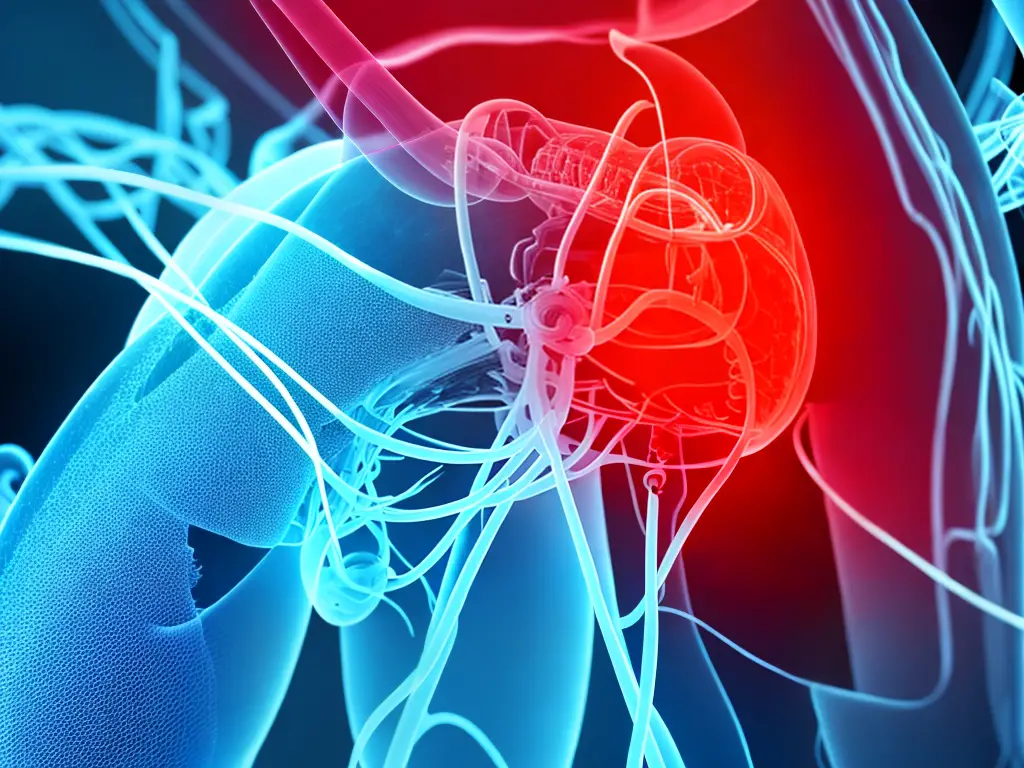
The Anatomy of the Knee Joint and Potential Treatments for Knee Pain
Understanding the complexity of the knee joint helps contextualize the potential benefits of PRP therapy. The knee is a hinge joint comprising three bones: femur (thigh bone), tibia (shin bone), and patella (knee cap). The bones’ ends are covered in a smooth layer of articular cartilage, enabling them to glide effortlessly during movement. The knee joint’s stability and mobility are maintained by the surrounding muscles, tendons, and ligaments, which connect the bones and facilitate the transfer of force between the lower and upper leg. This intricate structure highlights the importance of targeted treatments like PRP therapy, which can support tissue repair and nerve pain relief within the joint.
The major muscles involved in the knee joint include the quadriceps, hamstrings, and gastrocnemius. The quadriceps are a group of four muscles located at the front of the thigh, which are responsible for extending the knee. The hamstrings, located at the back of the thigh, help in bending the knee. Additionally, the gastrocnemius, a calf muscle, contributes to knee flexion. Tendons are strong, fibrous bands of tissue that connect these muscles to the bones. The most well-known tendon in the knee is the patellar tendon, which anchors the quadriceps to the tibia.
Ligaments are strong, fibrous bands of tissue that connect bones to one another, providing stability to the knee joint. There are four major ligaments in the knee: the anterior cruciate ligament (ACL), the posterior cruciate ligament (PCL), the medial collateral ligament (MCL), and the lateral collateral ligament (LCL). These ligaments work together to stabilize the knee during movement, preventing excessive forward, backward, and side-to-side motion.
Nerve blocks and platelet-rich plasma (PRP) therapy are two potential treatments for knee pain. Nerve blocks involve the injection of an anesthetic or anti-inflammatory medication directly onto a nerve, preventing the transmission of pain signals from the knee to the brain. Nerves such as the genicular nerves, which provide sensation to the anterior knee, can be targeted for knee pain relief. This treatment has been shown to be effective in reducing pain associated with osteoarthritis, post-operative knee pain, and conditions involving damage to the articular cartilage or other structures around the knee joint.
In contrast, PRP therapy harnesses the body’s natural healing process to repair damaged or inflamed tissue. During this procedure, a small sample of the patient’s blood is collected and centrifuged in order to isolate the platelet-rich plasma containing growth factors, cytokines, and other healing proteins. The PRP is then injected into the affected area of the knee, promoting tissue repair, reducing inflammation, and potentially leading to pain relief. This therapy has been used to treat conditions such as patellar tendonitis, ligament injuries, and early-stage osteoarthritis.
Having a comprehensive understanding of the knee joint’s intricate anatomy plays a crucial role in selecting the most suitable nerve treatments, such as nerve blocks and PRP therapy, to provide relief for those suffering from knee pain.
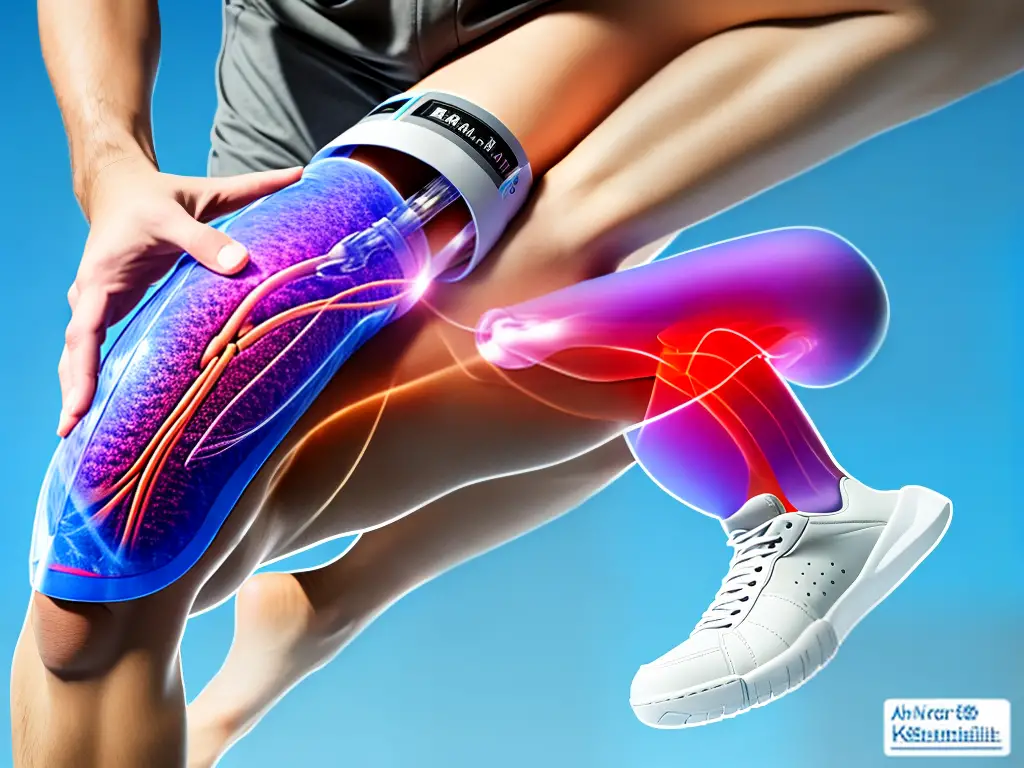
Nerve Blocks for Managing Knee Pain
For instance, nerve blocks serve as an effective solution for managing knee pain arising from various conditions like osteoarthritis, injuries, and surgery. By targeting specific nerves within the knee, such as femoral, genicular, and sciatic nerves, these treatments employ the use of local anesthetics, corticosteroids, or neurolytic agents to alleviate pain and inflammation by blocking nerve signals. The knowledge of these treatments, along with others like PRP therapy, ensures appropriate interventions are carried out for optimal outcomes.
Femoral Nerve Blocks
Femoral nerve blocks target the femoral nerve, which provides sensation to the anterior and medial aspects of the knee. This type of nerve block is commonly used after knee replacement surgeries to provide pain relief during the recovery process. During the procedure, a needle is inserted through the skin and placed near the femoral nerve, guided by ultrasound. Medication is then injected around the nerve to block pain signals. This can provide immediate pain relief lasting for several hours to weeks, sometimes even several months.
Genicular Nerve Blocks
Genicular nerve blocks target the nerves around the knee joint (superior medial, superior lateral, and inferior medial genicular nerves) responsible for transmitting pain signals. These nerve blocks are typically used to treat knee pain associated with osteoarthritis or other degenerative conditions. The procedure involves injecting a local anesthetic, with or without a corticosteroid, into the genicular nerves using ultrasound or fluoroscopic guidance. If the initial block is successful, a genicular nerve radiofrequency ablation can be performed, using heat generated from radio waves to disrupt the nerves and provide longer-lasting pain relief.
Sciatic Nerve Blocks
Sciatic nerve blocks are utilized to manage posterior knee pain often experienced after major knee surgeries. They target the sciatic nerve, which is the primary nerve responsible for sensation in the back of the knee and lower leg. The procedure commonly involves injecting a local anesthetic near the sciatic nerve, either at the gluteal region or in the popliteal fossa behind the knee. This nerve block can provide pain relief lasting several hours to days or even weeks, depending on the medication used.
One option for knee pain relief is nerve blocks, which can provide significant pain reduction. However, there are potential side effects and risks associated with these procedures, such as temporary numbness or weakness in the affected areas, bleeding, and infection at the injection site. Less commonly, damage to surrounding tissue, blood vessels, or nerves, and allergic reactions to the medications used may occur. It is essential to discuss these risks with your healthcare provider before undergoing any nerve block procedure, as they will be able to assess your individual medical history and provide personalized recommendations based on your specific needs.
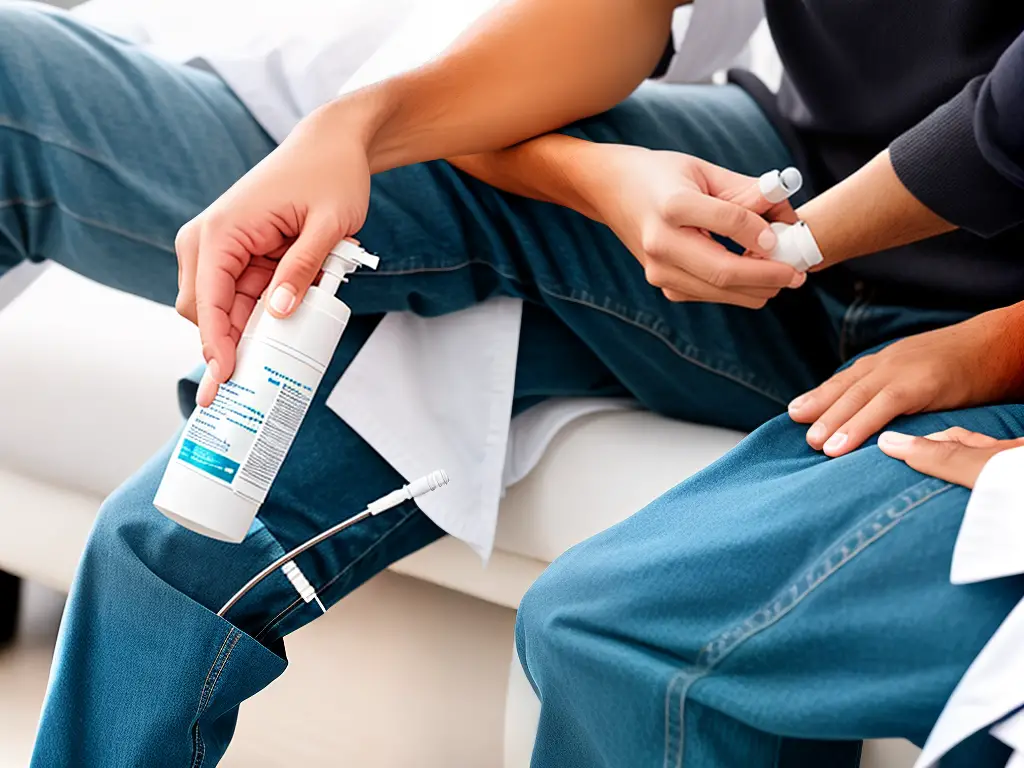
Platelet-Rich Plasma (PRP) Therapy: A Promising Treatment for Knee Pain
Another innovative treatment to consider for knee pain is platelet-rich plasma (PRP) therapy, which utilizes the body’s own natural healing abilities to alleviate pain and promote tissue repair. During this procedure, a concentrated solution containing a high number of platelets is injected directly into the injured area. This stimulates the healing process, potentially reducing pain and inflammation. By comparing the benefits and risks of both nerve blocks and PRP therapy, you can make a more informed decision on which treatment may be most suitable for you.
The history of PRP therapy extends back several decades, and it has been utilized across various medical disciplines, including orthopedics, sports medicine, and dental and maxillofacial surgery.
The process of obtaining PRP involves taking a sample of the patient’s own blood and placing it in a centrifuge to separate platelets from other blood components. The resulting solution, which contains a higher concentration of platelets than whole blood, is then carefully injected into the injured tissue or joint. Platelets, small cell fragments found in blood, play a critical role in the body’s natural healing process by releasing growth factors that stimulate tissue repair, reducing inflammation, and recruiting other cells to help heal the injury site.
One of the significant advantages of PRP therapy lies in its inherent safety, as the treatment utilizes the patient’s blood, thereby reducing the risk of allergic reactions, infections, or disease transmission. This method has been shown to be effective in treating a wide range of conditions, including osteoarthritis, ligament sprains, tendonitis, and various knee injuries such as meniscus tears and patellar tendon issues. Several high-profile athletes have undergone PRP therapy, propelling its popularity in the field of sports medicine.
While PRP therapy has demonstrated promising results, it is crucial to note that this technique is not without risks and potential side effects. Some patients may experience pain or swelling at the injection site or temporary stiffness in the joint. More severe complications, such as infection or nerve damage, are rare but can be potentially serious if they occur. As with any medical procedure, it is essential to carefully consider the risks and benefits of PRP therapy and discuss them with a qualified healthcare professional before undergoing treatment.
Managing knee pain in adults can involve diverse treatment options, such as nerve blocks and platelet-rich plasma (PRP) therapy. Nerve blocks consist of injecting local anesthetics, steroids, or other medications around specific nerves to ‘block’ pain signals from reaching the brain, offering temporary pain relief. On the other hand, PRP therapy involves injecting the patient’s own concentrated platelets (derived from their blood) into the affected area, stimulating the healing of damaged tissues such as tendons, ligaments, and cartilage. Both treatments have their advantages and disadvantages, with the decision between them depending on factors like severity of pain, underlying causes, and patient preferences.
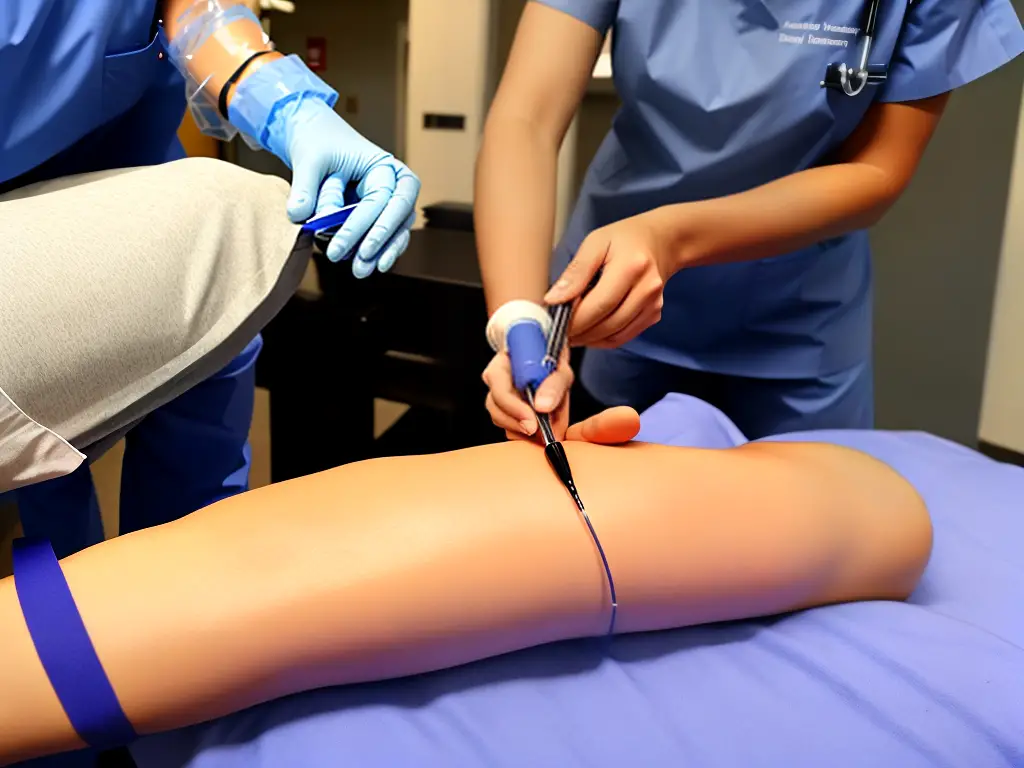
Nerve Blocks and Platelet-Rich Plasma Therapy for Knee Pain
It is important to note that research is still ongoing to determine the optimal PRP concentration, precise injection protocols, and the most effective conditions for using this therapy. Moreover, PRP therapy is typically not covered by insurance, and the cost can vary depending on the provider and geographic location. Despite these limitations, PRP therapy presents a promising, minimally invasive option for individuals seeking an alternative to conventional treatments for knee pain and injured tissues, or those looking to enhance their body’s natural healing potential.
One of the primary differences between nerve blocks and PRP therapy is the source of pain relief. Nerve blocks work directly on the nervous system by inhibiting pain signals, while PRP therapy aims to resolve the underlying cause of pain by accelerating the body’s natural healing process. As a result, PRP therapy may provide a longer-lasting and more sustainable solution for knee pain, whereas nerve blocks typically provide only temporary relief. However, the efficacy of PRP therapy is still a topic of ongoing research, and some studies have reported mixed results concerning its effectiveness in reducing pain and improving function in patients with knee pain.
In terms of benefits, nerve blocks can provide rapid and significant pain relief, allowing the patient to engage in physical therapy or other activities that might otherwise be limited by pain. This treatment may be particularly helpful for patients experiencing severe knee pain, who require immediate symptom relief. PRP therapy, on the other hand, may provide long-term benefits by promoting tissue healing and potentially addressing the underlying causes of knee pain. Some studies have shown promising results in patients with osteoarthritis and various soft tissue injuries, suggesting that PRP therapy may be a viable option for a broad range of knee-related issues.
When considering the drawbacks, nerve blocks may carry risks such as infection, bleeding, and nerve damage, as well as potential side effects from the injected medications. Furthermore, the pain relief provided by nerve blocks is often temporary, with the duration of relief varying depending on the specific medication and individual patient factors. PRP therapy, while generally considered safe due to the use of the patients’ own blood, can be expensive and may not be covered by insurance. Additionally, the effectiveness of PRP therapy in reducing knee pain remains a subject of ongoing debate, with some studies reporting minimal or no significant benefits.
Ultimately, deciding between nerve blocks and PRP therapy for treating knee pain depends on various factors, such as the severity and duration of the pain, the underlying cause, the patient’s overall health, and the potential risks and benefits of each treatment. Engaging in a thorough discussion with a healthcare professional can help patients choose the most suitable treatment option for their unique situation. As both treatments continue to be researched and developed, it is crucial for patients and providers alike to stay informed about the latest evidence supporting or challenging these therapies’ effectiveness in managing knee pain.
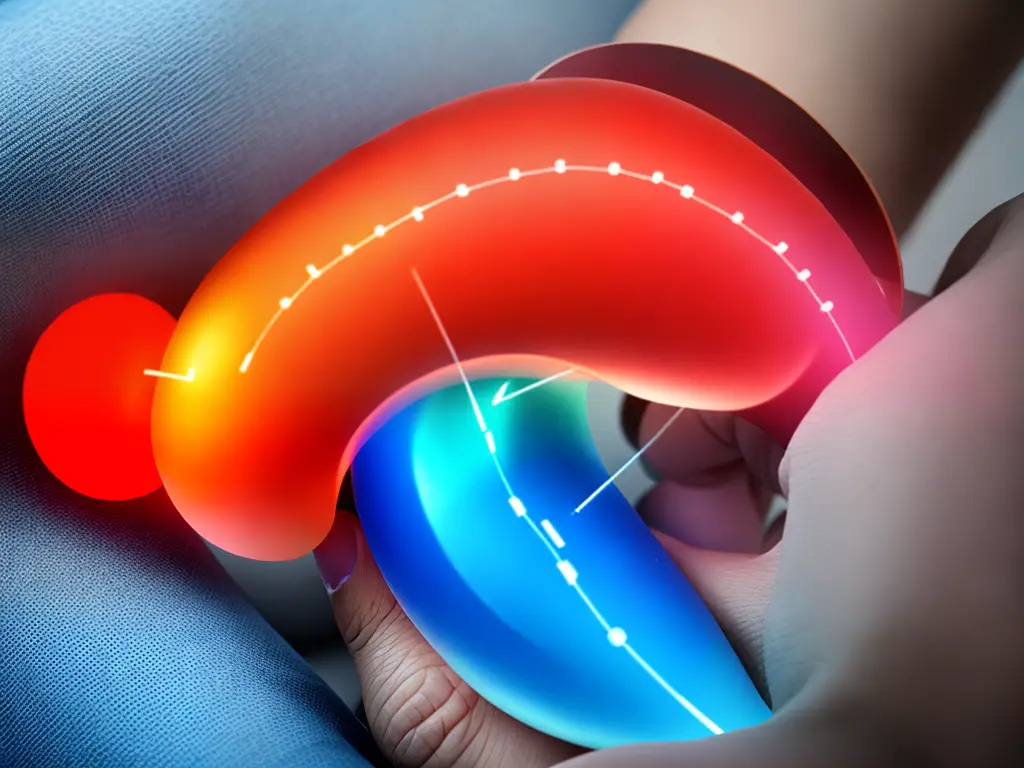
Combining Physical Therapy And Other Modalities For Managing Knee Pain
In addition to considering nerve blocks and PRP therapy, it is important not to overlook the critical role of physical therapy and rehabilitation in managing knee pain and improving joint function. These conservative modalities enable individuals to maintain or regain their mobility and overall quality of life by focusing on enhancing strength, flexibility, endurance, and joint mechanics. This comprehensive approach to treatment can help alleviate pain and prevent future injuries, while also complementing any potential benefits from nerve blocks or PRP therapy.
Integrating physical therapy and rehabilitation with advanced nerve treatments, such as nerve blocks and platelet-rich plasma (PRP) therapy, creates a synergistic approach that can provide better pain relief and long-term results for patients living with knee pain.
Nerve Blocks
Nerve blocks involve the injection of local anesthetics and anti-inflammatory medication to block the transmission of pain signals from the affected nerves, providing temporary relief from knee pain. This allows patients to actively participate in their physical therapy and rehabilitation, working through targeted exercises and stretches without the limitation of severe pain. As nerve blocks only provide temporary relief, incorporating physical therapy ensures that patients can continue working on strengthening and stabilizing the knee joint even after the effects of nerve blocks have subsided.
Platelet-Rich Plasma (PRP) Therapy
PRP therapy utilizes the patient’s own platelets and growth factors to promote tissue healing and regeneration, addressing the root causes of knee pain. When combined with physical therapy, this treatment can support the healing process and improve joint function more effectively than either treatment alone. As the body’s natural healing response is stimulated by PRP injections, physical therapy can be tailored to the individual’s needs and progresses to help restore normal joint mechanics, minimize pain, and prevent further damage to the knee.
Successful integration of physical therapy with nerve blocks and PRP therapy relies on close collaboration between healthcare professionals and a customized approach to each patient’s unique condition. By closely monitoring the patient’s progress and adjusting the plan as needed, this integrated approach can help achieve the best possible outcome in terms of pain relief, functional improvement, and overall quality of life.
When it comes to addressing the multifaceted issue of knee pain, employing a comprehensive approach that combines physical therapy, rehabilitation, nerve blocks, and PRP therapy can be highly effective. A knowledgeable therapist can guide patients through physical therapy while also utilizing temporary pain relief from nerve blocks and harnessing the healing properties of PRP therapy. This tailored plan optimizes both pain relief and long-term functional improvements.

Adjunctive Therapies for Knee Pain
In addition to nerve blocks and PRP (Platelet-Rich Plasma) therapy, which are popular treatments for knee pain, particularly among individuals suffering from arthritis, joint injuries, or other painful conditions, it is crucial to explore alternative and adjunctive therapies. Techniques such as acupuncture, massage therapy, and TENS (Transcutaneous Electrical Nerve Stimulation) units can further enhance the effectiveness of nerve blocks and PRP therapy for a truly comprehensive pain management system.
Acupuncture is an ancient Chinese practice that has been used for centuries to treat a variety of ailments, including knee pain. The treatment involves inserting thin needles into specific points of the body to correct imbalances in energy flow, which can help alleviate pain and inflammation. Acupuncture can be an excellent adjunctive therapy alongside nerve blocks and PRP therapy, as it helps to provide immediate relief from pain while addressing underlying issues that may be causing ongoing discomfort.
Massage therapy is another alternative treatment that can provide relief from knee pain. Professional therapists employ a variety of techniques to alleviate muscle tightness, improve circulation, and promote relaxation. This can help to lessen knee pain by reducing inflammation and muscle tension, making it easier for patients to engage in rehabilitation exercises and ultimately improve their overall knee function. Pairing massage therapy with nerve blocks and PRP therapy can enhance the overall effectiveness of these interventions by addressing pain from several angles.
The use of a TENS unit is another alternative treatment for knee pain. This treatment involves placing electrodes around the painful area and providing gentle electrical stimuli to the nerves. The electrical impulses can help to disrupt pain signals as they travel to the brain, providing temporary relief without the use of medications. Utilizing a TENS unit in conjunction with nerve blocks and PRP therapy can help to manage pain during the recovery period and may allow patients to reduce their reliance on pain medication.
In conclusion, nerve blocks and PRP therapy can provide significant relief for those suffering from knee pain when combined with complementary and alternative therapies. By incorporating acupuncture, massage therapy, and TENS units into a comprehensive pain management plan, patients can expect improved overall knee health and long-term healing.
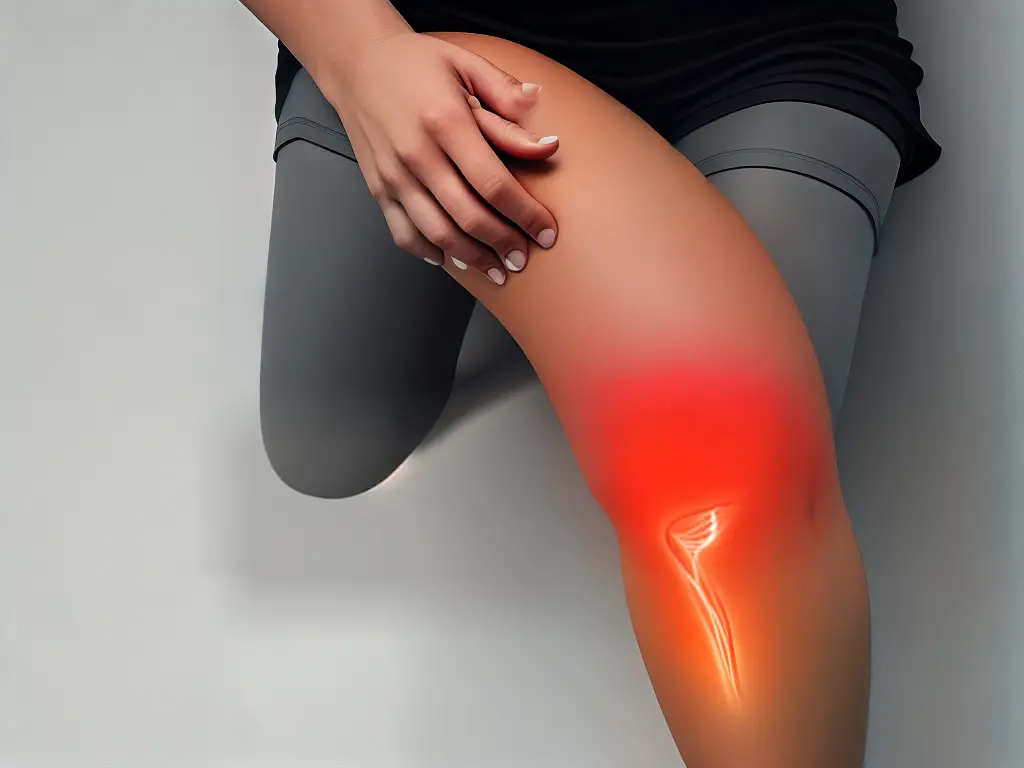
Prevention and Self-care for Knee Pain and Joint Health
Additionally, prevention and self-care strategies for knee pain and joint health play a significant role in maximizing the effectiveness of treatments such as nerve blocks and PRP therapy. Adopting proper measures, such as wearing proper footwear, performing regular stretching, and engaging in strengthening exercises can help reduce the need for invasive treatments while ensuring optimal joint health and alleviating knee pain.
One of the crucial aspects of prevention and self-care for knee pain is the use of appropriate footwear. Wearing shoes that provide adequate support, cushioning, and alignment helps in reducing stress on the knee joint and preventing injuries. In some cases, orthotic devices or shoe inserts might be recommended to correct specific issues like pronation or supination, which can contribute to knee pain. Proper footwear becomes even more vital if you suffer from a condition that requires nerve block or PRP therapy, as it can help ensure that the treatment is effective and the chances of recurring pain are minimized.
In addition to proper footwear, engaging in regular stretching and strengthening exercises can significantly contribute to improved joint health and reduced knee pain. Stretching helps maintain flexibility, which is vital for the prevention of injuries and the promotion of proper joint function. Strengthening exercises, on the other hand, focus on developing the muscles around the knee joint, providing additional stability and support. Engaging in a consistent exercise program before and after nerve treatments such as nerve blocks and PRP therapy can aid in enhancing the outcomes and long-term success of these procedures.
Weight management is another major factor in promoting knee health and preventing knee pain. Carrying excess weight can place immense stress on the knee joint, leading to several complications such as cartilage breakdown and osteoarthritis. Maintaining a healthy weight through a balanced diet and regular physical activity can ease the burden on your knee joints, potentially reducing the need for additional treatments like nerve blocks and PRP therapy, or enhancing their effectiveness when used alongside these preventive measures.
Addressing knee pain through a healthy lifestyle and proper nutrition is crucial in maintaining joint health and potentially avoiding the need for invasive treatments. Consuming a balanced diet rich in vitamins, minerals, and nutrients that promote joint health, such as calcium, vitamin D, and omega-3 fatty acids, can help keep the knee joint in optimal condition. In some cases, supplements like glucosamine and chondroitin sulfate might be recommended to support healthy cartilage and joint function. Ensuring overall health will increase the effectiveness of more invasive treatments, such as nerve blocks or PRP therapy, if they are required in the future.
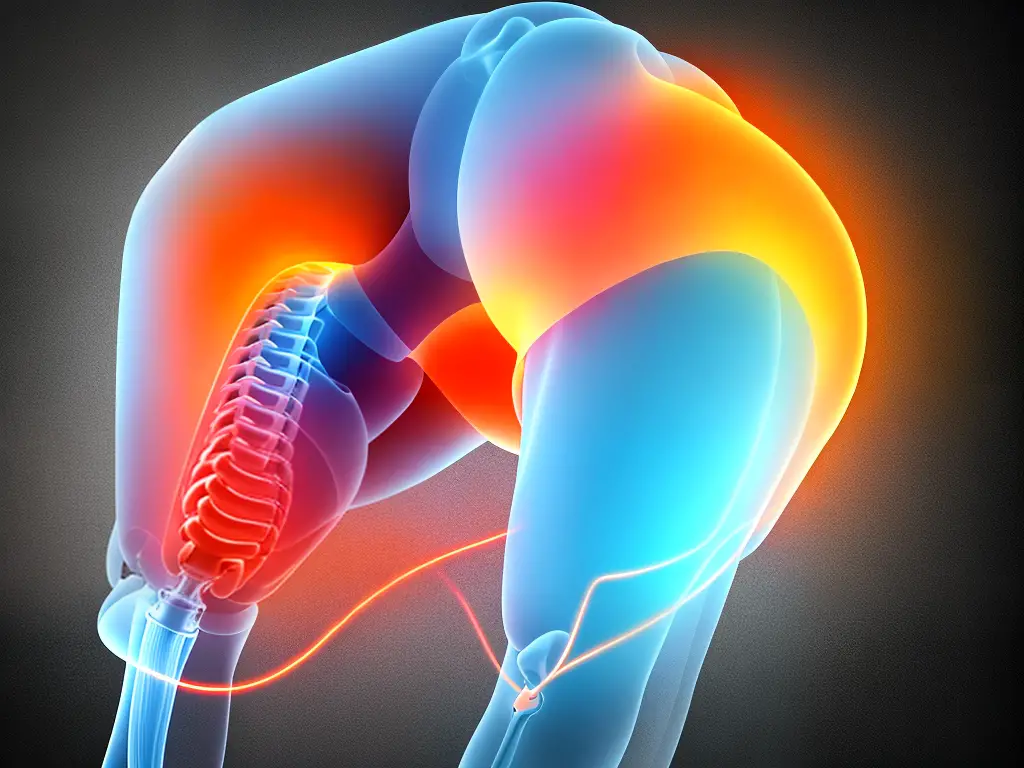
Treatment Modalities for Knee Pain
When knee pain becomes persistent or unmanageable, there are treatments like nerve blocks and platelet-rich plasma (PRP) therapy that have shown promise in recent clinical studies. Nerve blocks provide temporary pain relief by injecting an anesthetic agent near the nerves responsible for transmitting pain signals to the brain. On the other hand, PRP therapy involves injecting a concentrated solution of the patient’s blood into the affected area, with the aim of stimulating the repair and regeneration of damaged tissues. The literature supports the potential of these treatment modalities for patients with knee pain due to osteoarthritis, injury, or surgery (Joo et al., 2021), especially when combined with a proactive commitment to a healthy lifestyle.
One study investigated the effectiveness of PRP injections versus hyaluronic acid and placebo in patients with knee osteoarthritis. The results showed a significant improvement in pain and function for the PRP group compared to the other two groups up to 6 months post-intervention (Filardo et al., 2022). Another study assessed the effect of nerve blocks, in particular genicular nerve blocks, for chronic knee pain from osteoarthritis. The study found that this type of nerve block is a safe, effective, and feasible method for managing knee pain and improving function in patients with knee osteoarthritis (Börekçi et al., 2021).
Emerging treatments for knee pain include stem cell therapy and gene therapy. Stem cell therapy involves the use of stem cells – undifferentiated cells that can develop into specialized cell types – to promote tissue regeneration and repair. In a recent clinical trial, adipose-derived mesenchymal stem cells were injected into the knees of patients with osteoarthritis. The trial reported significant improvements in pain, function, and quality of life at 6 and 12 months following the stem cell treatment (Koh et al., 2021).
Gene therapy is another innovative approach being explored for knee pain management. This treatment modality aims to deliver genes to the target tissue, leading to the expression of therapeutic proteins that can aid in tissue repair and regeneration. A recent study demonstrated that the targeted delivery of the anti-inflammatory cytokine interleukin-10 via a gene therapy vector resulted in significant pain relief and functional improvement in an animal model of arthritis (Gouze et al., 2020). This suggests that gene therapy could be a viable future strategy for managing knee pain in humans.
In conclusion, there is growing evidence to support the use of nerve blocks and PRP therapy for managing knee pain, and novel treatments such as stem cell therapy and gene therapy show great promise for the future. The ongoing advancement of technology and our understanding of the mechanisms underlying pain and tissue repair will undoubtedly continue to pave the way for innovative pain management strategies for knee pain and other musculoskeletal conditions.

As our understanding of knee pain and its underlying mechanisms continues to evolve, new treatment strategies and technological advancements are changing the landscape of pain management. By staying informed about the latest clinical studies, emerging treatments, and evidence-based preventive and self-care measures, we can better equip ourselves to cope with the challenges of knee pain. An integrated approach, combining nerve blocks, PRP therapy, physical therapy, and alternative treatments, can help improve outcomes and ensure that individuals suffering from knee pain can live their lives to the fullest.